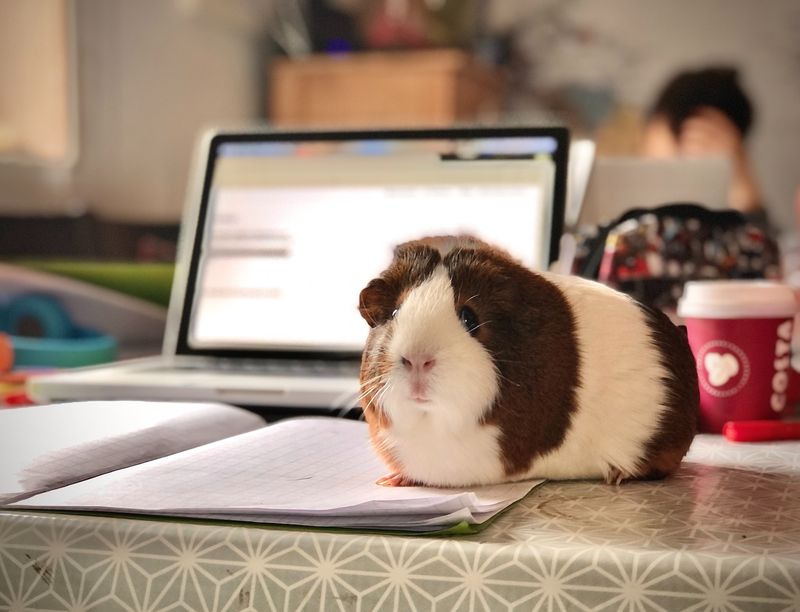
We all love animals, don’t we? I am sure you have a furry pet at home, or if not you may know someone who has a dog, a cat, or perhaps a hamster. Do you know how to say dog in Spanish? What about cat? If you don't, you came to the right place. In this article not only will you learn how to say the most common pets in Spanish, but you will learn about ALL other types of animals, like land and sea mammals, birds, fish, reptiles, amphibians, and even some insects! You may even learn about animals you’ve never heard of! You will also learn some common words we use to talk about these animals: slither, fly, hop, glide, growl, bark, and more!
Are you ready to learn about all the different types of animals? ¡Vamos!
¿Tienes una mascota? Do you have a pet? You may already be familiar with some of the following animals:
Are there any other pets you can think of that were not included on the list? When you are done reading this article you may want to add more.
¡Ojo! As you already know, Spanish nouns are divided into two groups: masculine and feminine. For some animals, we use a masculine version of the noun to refer to the male and a feminine version of the noun to refer to the female (gato/gata, perro/perra, conejo/coneja). For most animals, though, we use a fixed name in Spanish with an arbitrary gender that we need to learn and memorize. Some are masculine (indicated by the article el) and some are feminine (la). When we want to distinguish the animal’s sex, we add the word macho (male) or hembra (female) to the noun (la ardilla macho, la ardilla hembra). Finally, for some animals we have a different word altogether for male and female (caballo = male horse, yegua = female horse).
Fun Fact! Some Spanish speakers use the word mono/a not only to refer to monkeys but also to describe someone or an animal as cute. It also means overalls!
Fun Fact! Do you know the tongue twister Tres tristes tigres? It goes like this: Tres tristes tigres tragando trigo en un trigal. Do you think you can say it? Try it!
Fun Fact! The capybara, beaver, hippo, and otter are considered semi-aquatic mammals, since they live regularly in both aquatic and terrestrial environments.
Fun fact! Did you know that quetzal is not only a bird but Guatemala’s national currency, it was named after their national bird the quetzal?
¡Ojo! Don’t forget to pronounce the U in the word pingüino! The two dots above the U, called diéresis, indicate that the U between G and E or between G and I should be pronounced. Other similar words: cigüeña, bilingüe, lingüística.
¡Ojo! Did you notice that we used the article el for águila? Does that mean that águila is masculine? No, it is actually feminine (las águilas or el águila es blanca); we use the masculine article in the singular form for pronunciation reasons; we do not pronounce an A followed by another stressed one. Other similar words are: agua (el agua), hambre (el hambre).
Fun Fact! Have you heard the very famous song called La Cucaracha? It’s a popular Mexican folk song about a cockroach who cannot walk. I am sure you are not a fan of cockroaches but the song is catchy and it dates back at least to the 1910s!
Now that you know a lot of animals, you may find it useful to know some verbs used to talk about them. Let’s take a look at some common ones.
Atrapar – To catch
Los camaleones utilizan su larguísima lengua para atrapar insectos.
Chameleons use their very long tongues to catch insects.
Cazar – To hunt
Las orcas cazan en manadas.
Killer whales hunt in pods
Deslizar – To slide/slither
Las serpientes se deslizan para moverse.
Snakes slither to move.
Galopar - To gallop
Los caballos galopaban por la playa.
The horses galloped along the beach.
Gruñir – To growl
Los osos a veces gruñen cuando están agitados o nerviosos.
Bears sometimes growl when agitated or nervous.
Ladrar – To bark
El perro ladró cuando llegó su dueño.
The dog barked when its owner arrived.
Maullar – To meow
La gata maulla cuando tiene hambre.
The cat meows when she is hungry.
Piar – To chirp
Los pájaros pían para comunicarse.
Birds chirp to communicate.
Planear – To glide
Los petauros del ázucar son los únicos mamíferos que planean.
Sugar gliders are the only mammals that glide.
Rugir – To roar
Los leones rugen para demostrar su poder.
Lions roar to demonstrate their power.
Saltar – To jump/to hop
Las ardillas saltan por los árboles para buscar su comida.
Squirrels jump through the trees in search of food.
Volar – To fly
Las avestruces, a pesar de ser aves, no pueden volar.
Ostriches, despite being birds, cannot fly.
Fun fact! Do you know about petauros del azúcar (sugar gliders)? They are also known as ardillas voladoras (flying squirrels) although they are not closely related. They are small marsupials, related to canguros (kangaroos) and koalas. They get their name due to their love for sugary foods and their ability to glide through the air.
alas (wings), caparazón (shell), cola (tail), escamas (scales), nido (nest), patas (paws), pezuñas (claws), plumas (feathers), tentáculos (tentacles).
I hope you enjoyed learning about all sorts of animals in Spanish. There are many animals in the world but this article gave you a pretty good start! Practice them, learn about them, and it will be so much easier to remember all the amazing and interesting animals out there!
Let’s take a quick quiz to practice what you learned!
****
***********************
Answer Key:
***********************
Answer Key:
***********************
Answer Key:

Alicia Fernández is a content writer at Berges Institute.